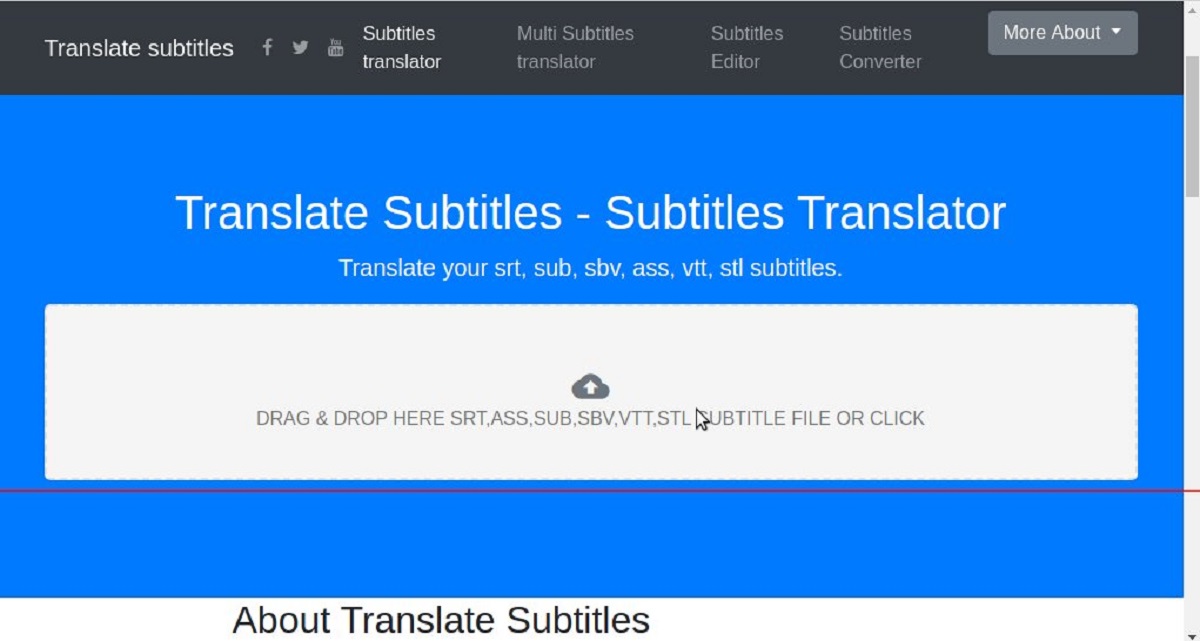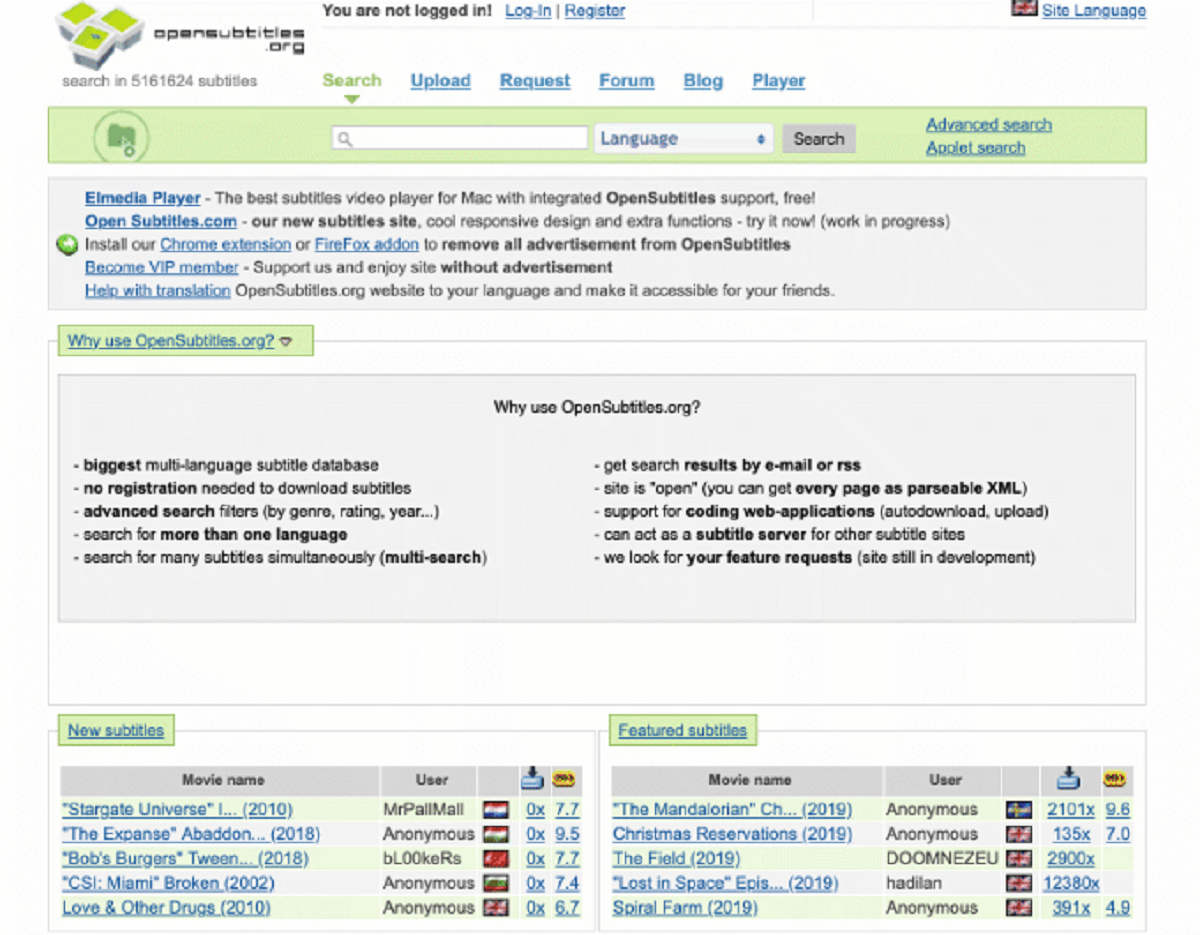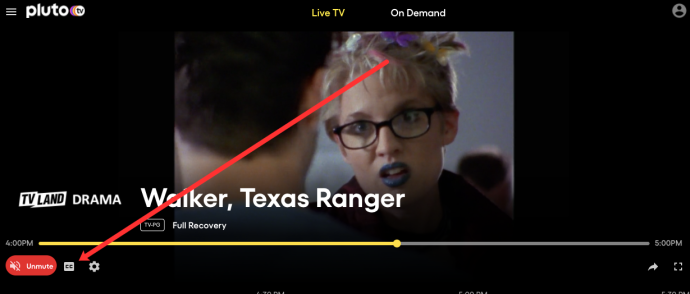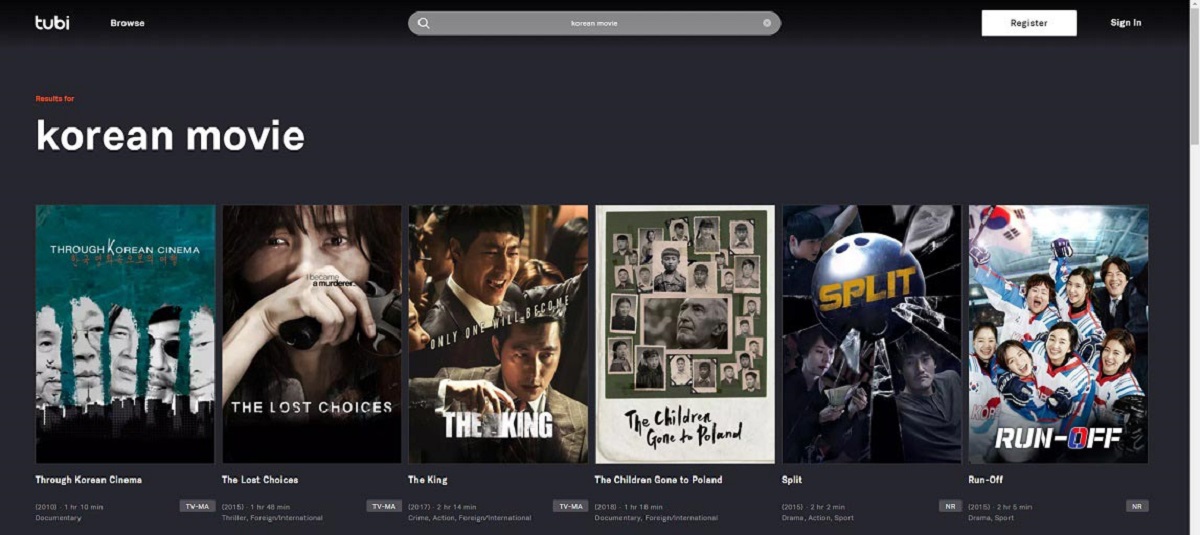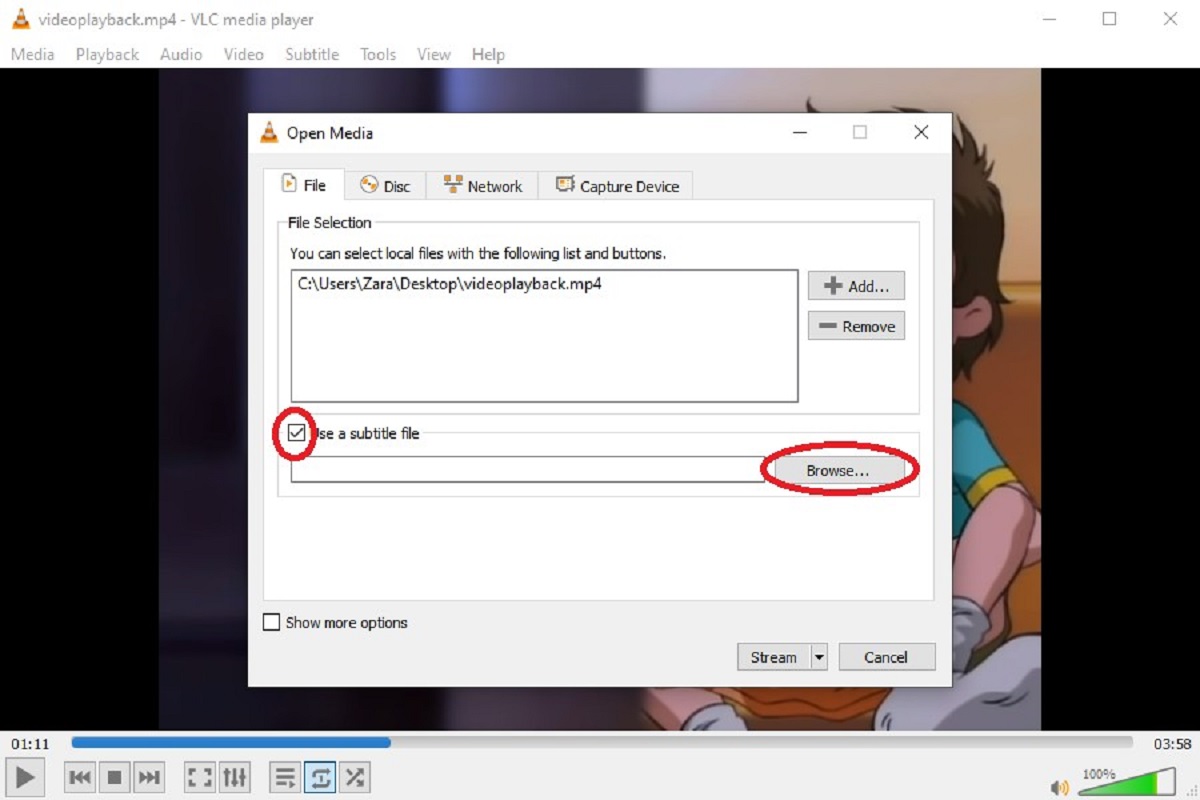Introduction
Movie subtitles play a vital role in providing accessibility and enhancing the viewing experience for a global audience. Whether it’s a foreign language film being translated into different languages or captions for viewers with hearing impairments, accurately translated and well-timed subtitles can significantly impact the way a movie is enjoyed and understood.
As an SEO writer with specialized knowledge in the field of movie subtitles, I am here to guide you on how to effectively translate movie subtitles. In this article, we will explore the important factors to consider, such as choosing the right translation software or tool, understanding cultural context, and language nuances, as well as the technical aspects of formatting and styling the subtitles.
Translating movie subtitles requires a unique skill set that combines linguistic expertise, technical knowledge, and a keen understanding of the nuances of film storytelling. It is a crucial task as it allows movies to transcend language barriers, enabling people from different cultures and backgrounds to enjoy the art of cinema in their native language.
Throughout this article, we will delve into the essential steps and best practices for translating movie subtitles. Whether you are a professional translator, a DIY enthusiast, or a filmmaker looking to subtitle your own movies, this guide will equip you with the knowledge and tools needed to produce accurate and high-quality subtitles.
Ready to embark on this subtitling journey? Let’s dive in and explore the fascinating world of translating movie subtitles!
Understanding the Importance of Movie Subtitles
Movie subtitles have a significant impact on the overall viewing experience and accessibility of films. They serve multiple purposes and cater to various audiences, making movies accessible to people who do not understand the original language, have hearing impairments, or prefer to watch movies with captions.
First and foremost, subtitles are essential for international films that need to reach a global audience. By translating the original dialogue into different languages, subtitles enable viewers who are not proficient in the film’s language to understand the plot, dialogue, and cultural references. This opens up a world of cinema, allowing people from different countries to appreciate and enjoy films from around the globe.
Moreover, subtitles play a crucial role in making movies accessible to individuals with hearing impairments. Captions allow these viewers to follow the conversations, sound effects, and important audio cues, ensuring that they can fully enjoy the movie. Subtitles also benefit individuals who may have difficulty understanding accents or mumbled dialogue, providing clarity and enhancing comprehension.
Beyond mere translation and accessibility, movie subtitles also preserve the authenticity and artistic integrity of the films. Accurate subtitles ensure that the original intent and emotions portrayed by the actors are conveyed to the audience. They capture the nuances of the language, including jokes, idioms, cultural references, and wordplay, making the viewing experience richer and more immersive.
Furthermore, subtitles can also serve as a valuable learning tool. Language learners can use subtitles to improve their language skills by reading along while watching movies. Subtitles provide learners with visual reinforcement of spoken language, aiding in vocabulary acquisition, pronunciation, and comprehension.
Additionally, for filmmakers and content creators, subtitles can significantly expand the reach of their work. By providing subtitles in multiple languages, they can target specific demographics and attract viewers from different countries. Subtitled films can also be submitted to international film festivals, reaching a wider audience and potentially gaining recognition on a global scale.
Understanding the importance of movie subtitles is crucial for anyone involved in the film industry or passionate about creating an inclusive viewing experience. By recognizing the impact subtitles have on accessibility, cultural exchange, and artistic integrity, we can ensure that movies can be enjoyed and understood by people from all walks of life.
Choosing the Right Translation Software or Tool
When it comes to translating movie subtitles, having the right software or tool can make a world of difference in terms of efficiency, accuracy, and overall quality. With a wide range of options available, selecting the right translation software is crucial. Here are some factors to consider:
1. User-Friendly Interface: Look for a translation software or tool that is user-friendly and intuitive. The interface should be easy to navigate, allowing you to work seamlessly and efficiently.
2. Translation Memory: Consider software that has a built-in translation memory feature. This allows you to store and reuse previous translations, ensuring consistency and saving time in the long run.
3. Language Support: Ensure that the software supports the languages you will be translating. It should be able to handle various scripts, alphabets, and characters specific to different languages.
4. Integration with Subtitling Platforms: If you are working within a specific subtitling platform, check whether the translation software seamlessly integrates with it. This helps to streamline the translation process and maintain consistency throughout your work.
5. Time-Coding Capabilities: Look for software that includes time-coding capabilities, allowing you to easily sync the translated subtitles with the timing of the original dialogue. This ensures accurate and synchronized subtitles.
6. Collaboration Features: If you are working as part of a team, consider translation software that offers collaboration features. These features enable multiple translators to work on the same project simultaneously, making coordination and quality control easier.
7. Quality Assurance Tools: Choose software with built-in quality assurance tools that can help you check for common errors, such as missing or overlapping subtitles, incorrect timing, and language inconsistencies.
8. Cost and Budget: Consider your budget and weigh it against the features and benefits offered by different software options. Determine whether you need a one-time purchase or a subscription-based model that offers ongoing support and updates.
By assessing these factors and considering your specific needs, you can find the right translation software or tool that meets your requirements and enhances your subtitling workflow. Remember, the right choice of software can significantly improve the accuracy, efficiency, and overall quality of your translated movie subtitles.
Guidelines for Translating Movie Subtitles
Translating movie subtitles requires more than just linguistic skills. It also involves understanding the context, maintaining readability, and ensuring that the subtitles sync with the dialogue and on-screen action. Here are some important guidelines to follow when translating movie subtitles:
1. Accuracy and Faithfulness: Aim for accuracy in your translations, ensuring that the meaning and intent of the original dialogue are faithfully conveyed. Avoid adding or omitting information unless necessary for clarity or cultural adaptation.
2. Readability and Conciseness: Keep the subtitles concise and easy to read. Use short sentences and break longer sentences into two lines if needed. Maintain a balance between keeping the dialogue natural and conveying the intended meaning accurately.
3. Timing and Duration: Ensure that the timing of the subtitles matches the on-screen dialogue. Each subtitle should appear and disappear at the appropriate moments, allowing viewers to read comfortably without missing important visual cues.
4. Line Length and Positioning: Limit the number of characters per line to maintain readability. Avoid overcrowding the screen with lengthy subtitles. Position the subtitles at the bottom center or bottom of the screen, unless there are visual elements obstructing the view.
5. Cultural Context and Adaptation: Consider the cultural context when translating idioms, jokes, and culturally specific expressions. Adapt them to make sense in the target language and culture while retaining the original intent and humor, if applicable.
6. Tone and Style: Try to capture the tone and style of the original dialogue in your translations. Adapt the language and register accordingly to reflect the characters’ personalities and the overall atmosphere of the movie.
7. Proofreading and Quality Assurance: Always proofread your translated subtitles for grammar, spelling, and punctuation errors. Check for consistency in terminology, capitalization, and formatting. Use quality assurance tools to ensure accuracy and proper synchronization.
8. Localization for Target Audience: If translating for a specific target audience, consider localizing certain elements to make the subtitles more relatable. This may include adjusting measurements, currency, or references to cultural specificities, while still maintaining the essence of the original dialogue.
By following these guidelines, you can ensure that your translated movie subtitles are accurate, readable, and seamlessly integrated into the viewing experience. Remember, translating subtitles is an art that requires a balance between language accuracy, cultural adaptation, and technical precision.
Transcribing the Original Subtitles
Before diving into the process of translating movie subtitles, it is essential to transcribe the original subtitles or dialogue accurately. Transcribing involves transcribing the spoken words and converting them into written text. This step is crucial to ensure a solid foundation for the translation process. Here are some guidelines for transcribing the original subtitles:
1. Watch the Movie with Original Subtitles: Begin by watching the movie with the original subtitles turned on. Pay close attention to the dialogue, timing, and any on-screen text or captions that need to be transcribed.
2. Use Proper Punctuation: Ensure that the transcription follows proper punctuation rules. Use commas, periods, question marks, and exclamation marks accordingly to accurately reflect the speaker’s tone and pacing.
3. Identify Different Speakers: Differentiate between speakers by assigning names or labels to each speaker in the transcription. This will help maintain clarity and facilitate accurate translation.
4. Capture Non-Verbal Sounds: Note any non-verbal sounds, such as laughter, applause, or sound effects, in the transcription. These cues are essential for creating a cohesive and immersive viewing experience.
5. Indicate Timing and Duration: Mark the timing of each subtitle in the transcription. This will assist in synchronizing the translated subtitles with the on-screen dialogue during the later stages of the subtitling process.
6. Preserve Formatting: Preserve the formatting of the original subtitles, including line breaks and text formatting such as italics or bold, if applicable. This will help maintain consistency and accurately convey the filmmakers’ intended visual presentation.
7. Proofread for Accuracy: Proofread the transcription for any errors, such as misspellings or missing words. Ensure that the transcription is a faithful representation of the dialogue in the movie.
8. Consider Localization: If the movie includes regional or specific dialects, consider transcribing them as accurately as possible. Note any colloquial expressions or slang that may require adaptation during the translation process.
By following these guidelines for transcribing the original subtitles, you will lay a solid foundation for the subsequent translation process. Accurate transcription serves as a reference point for maintaining the timing, context, and overall integrity of the original dialogue when translating movie subtitles.
Understanding Cultural Context and Language Nuances
Translating movie subtitles goes beyond mere linguistic accuracy; it requires a deep understanding of cultural context and language nuances. Cultural and linguistic differences play a significant role in the way dialogue is understood and expressed. Here are some key points to consider when it comes to understanding cultural context and language nuances:
1. Idioms and Expressions: Idioms and expressions are cultural linguistic elements that may not directly translate. It is vital to adapt these idiomatic expressions to make sense in the target language while retaining the intended meaning and flavor of the original dialogue.
2. Humor and Wordplay: Humor can be highly culture-specific, relying on wordplay or references that may not carry the same comedic effect in other languages. Translators must find creative ways to retain humor by adapting jokes or finding alternative comedic techniques that resonate with the target audience.
3. Cultural References: Movies often contain references to cultural events, historical figures, or pop culture icons that may not be universally known. Translators should adapt or replace these references with equivalent ones that are familiar to the target audience without losing the overall meaning and impact of the original dialogue.
4. Sensitive Topics and Taboos: Different cultures have different sensitivities and taboos. Translators must be aware of these cultural nuances and adapt the dialogue accordingly to avoid causing offense or misunderstanding.
5. Formality and Politeness: Consideration should be given to the formal or informal nature of the dialogue. Languages often have different levels of formality and politeness, and the translation should reflect the appropriate level of respect and social norms in the target language.
6. Historical and Geographical Context: Movies set in specific historical or geographical contexts may require additional research to ensure accurate translation. Familiarize yourself with the time period, historical events, or specific location to capture the authentic essence of the dialogue.
7. Subtext and Deeper Meanings: Movies often convey deeper meanings or subtext through dialogue. Translators must grasp the subtleties and nuances of the dialogue to accurately convey these underlying messages to the target audience.
8. Research and Continuous Learning: Stay updated on cultural trends, linguistic evolutions, and social changes to enhance your understanding of cultural context and language nuances. Continuously improving your knowledge will help you provide more accurate and culturally sensitive translations.
By understanding cultural context and language nuances, translators can ensure that the translated movie subtitles capture the essence and meaning of the original dialogue while resonating with the target audience on a cultural and linguistic level.
Time and Synchronization Factors
Translating movie subtitles involves more than just accurate translation; it also requires precise timing and synchronization with the on-screen dialogue. Time and synchronization factors play a crucial role in ensuring that the subtitles appear and disappear at the right moments, enhancing the viewer’s understanding and immersion in the film. Here are some important considerations for managing time and synchronization when translating movie subtitles:
1. Timing Accuracy: Timing is crucial when it comes to subtitling. Each subtitle should appear and disappear on the screen at the appropriate time, closely aligned with the spoken dialogue. Pay attention to the timing of each subtitle to ensure its seamless integration with the on-screen action.
2. Reading Speed: Consider the reading speed of the audience when determining the duration of each subtitle. Subtitles should allow viewers sufficient time to read and process the text while keeping up with the pace of the film. Avoid overcrowding the screen with lengthy subtitles that may be difficult to read within the given time frame.
3. Visual Cues and Transitions: Take into account any visual cues or transitions occurring alongside the dialogue. Subtitles should not obstruct or interfere with important visual elements, such as on-screen text, facial expressions, or essential action sequences. Maintain a balance between subtitle placement and the overall visual presentation.
4. Simultaneous Speech: In cases where multiple characters speak at the same time or engage in rapid-fire dialogue, it is essential to ensure that the subtitles accurately reflect the timing and overlapping nature of the speech. Break down the dialogue into separate subtitles, making it easier for viewers to follow the conversation.
5. Synchronization with Audio: Pay close attention to the synchronization between the translated subtitles and the corresponding audio. Subtitles should match the rhythm and pacing of the dialogue, allowing viewers to associate the spoken words with the written text seamlessly.
6. Punctuation and Pause Indicators: Use punctuation marks, such as commas and ellipses, to indicate pauses or breaks in the dialogue. This helps viewers understand the natural flow of conversation and supports accurate timing during subtitling.
7. Sound Effects and Music: Consider any sound effects or music cues that accompany the dialogue. Subtitles should encompass these elements to provide a comprehensive viewing experience, allowing viewers to understand the auditory nuances and enhance their immersion in the film.
8. Review and Adjustments: After translating and timing the subtitles, review and make adjustments as necessary. Watch the subtitled film carefully to ensure that the timing and synchronization of the subtitles align perfectly with the on-screen dialogue and action.
By paying careful attention to time and synchronization factors, translators can ensure that the translated subtitles seamlessly integrate with the film, creating a cohesive and immersive experience for the viewers. The precise timing and synchronization of subtitles significantly contribute to the overall appreciation and understanding of the movie.
Editing and Reviewing the Translated Subtitles
Once the subtitles have been translated, the next crucial step is editing and reviewing the translated content. Editing ensures that the subtitles are accurate, fluent, and properly formatted, while reviewing involves a thorough analysis of the translation to ensure its overall quality. Here are some key points to consider when editing and reviewing translated subtitles:
1. Accuracy Check: Review the translated subtitles for accuracy, confirming that the meaning of the original dialogue has been faithfully conveyed. Check for any mistranslations, omissions, or additions that may impact the overall understanding of the film.
2. Fluency and Naturalness: Read through the subtitles to assess their fluency and naturalness in the target language. Ensure that the translated text flows smoothly and sounds natural to native speakers of the language while retaining the essence of the original dialogue.
3. Consistency: Review the subtitles for consistency in terminology, style, and formatting. Ensure that recurring terms, character names, and specific phrasing are consistent throughout the translation, maintaining a cohesive viewing experience.
4. Grammar and Spelling: Check for grammatical errors, spelling mistakes, and punctuation inconsistencies. Pay attention to the correct use of capitalization, verb tenses, and other grammatical rules applicable to the target language.
5. Formatting and Styling: Verify that the subtitles are properly formatted and styled according to industry standards. Check for consistent use of font type, size, color, positioning, and other visual elements to ensure a professional and visually appealing appearance.
6. Timing and Synchronization: Review the timing and synchronization of the subtitles with the on-screen dialogue and action. Ensure that each subtitle appears and disappears at the correct time, providing viewers with adequate time to read and comprehend the text without missing essential visual cues.
7. Proofreading: Conduct a thorough proofreading of the entire subtitles file. Check for typos, missing words, or any other errors that may have been overlooked during the initial translation process. Carefully proofread the subtitles multiple times to ensure the highest level of accuracy.
8. Peer Review and Feedback: Seek feedback from colleagues or other qualified professionals in the field. Their fresh perspective and expertise can help identify any potential issues or areas for improvement that may have been missed during the individual editing and reviewing process.
Editing and reviewing translated subtitles are critical steps to ensure the final product meets the highest standards of quality and accuracy. By carefully examining the subtitles for errors, fluency, consistency, and synchronization, you can ensure that the translated subtitles enhance the overall viewing experience and effectively convey the intended message of the film.
Formatting and Styling the Subtitles
When translating movie subtitles, it is important to give attention to formatting and styling to ensure that the subtitles are visually appealing and easy to read. Proper formatting and styling can greatly enhance the viewer’s experience and comprehension of the film. Here are key considerations when it comes to formatting and styling subtitles:
1. Font and Size: Choose a clear and legible font for the subtitles. Avoid overly decorative or difficult-to-read fonts. The font size should be large enough to be easily readable on different screen sizes, but not so large that it obstructs the viewer’s view of the screen.
2. Color and Contrast: Use colors that provide a good contrast with the background and do not blend in with the visuals. Typically, white or light-colored subtitles with a dark outline are preferred for maximum readability. Ensure that the chosen colors do not strain the viewer’s eyes when reading the subtitles.
3. Positioning: Position the subtitles at the bottom center or bottom of the screen, unless there are visual elements obstructing the view. Subtitles should not cover important on-screen text, character faces, or crucial visual elements that are essential for understanding the film.
4. Line Length: Limit the number of characters per line to make the subtitles easier to read. Long lines can be challenging for viewers to follow, especially in fast-paced dialogue or action scenes. Break longer sentences into two lines if necessary, maintaining readability without overwhelming the viewer with too much text at once.
5. Duration and Timing: Consider the duration of each subtitle to ensure that viewers have enough time to read and comprehend the text. Avoid rushing or lingering subtitles that may not align with the natural pace of the dialogue. Ensure synchronization between the appearance and disappearance of the subtitles with the spoken words.
6. Italics and Formatting: Use italics to indicate emphasis or when speakers are quoting written text, song lyrics, or in cases where the visuals call for specific styling. Maintain consistency in the use of italics throughout the subtitles to avoid confusion or inconsistency in the presentation.
7. Captions for Sound Effects and Non-Speech Elements: Include captions for significant sound effects, music lyrics, or non-speech elements that contribute to the overall audiovisual experience. These captions help viewers understand the full range of audio elements and enhance their engagement with the film.
8. File Formats and Encoding: Save the subtitle file in a compatible file format, such as .SRT or .ASS, to ensure compatibility with various media players. Be mindful of the encoding to avoid issues with special characters or language-specific characters during playback.
By carefully considering formatting and styling elements, you can enhance the readability and visual appeal of the subtitles, resulting in a more enjoyable and accessible viewing experience. Well-formatted and styled subtitles seamlessly integrate with the film, allowing viewers to fully immerse themselves in the story while understanding every aspect of the dialogue.
Adapting Subtitles for Different Screen Sizes
When translating movie subtitles, it is essential to adapt them for different screen sizes to ensure optimal readability and visual integration. Subtitles that are too small or too large can hinder the viewer’s experience and comprehension of the film. Here are key considerations when adapting subtitles for different screen sizes:
1. Font Size and Scaling: Adjust the font size based on the screen size to ensure readability. On larger screens, increase the font size to maintain legibility, while on smaller screens, reduce the font size to avoid overcrowding the subtitles or obstructing important visual elements.
2. Line Length and Positioning: Adapt the line length of subtitles to fit the width of the screen. On wider screens, you can expand the line length to utilize the available horizontal space. Position the subtitles at the bottom center or bottom of the screen, ensuring that they do not overlap with critical visual elements.
3. Aspect Ratio Considerations: Take into account the aspect ratio of the screen to optimize the placement and formatting of the subtitles. For wider screens, subtitles may be positioned toward the bottom, while for narrower screens, they may be positioned closer to the center.
4. Testing on Different Devices: Test the subtitles on different devices with varying screen sizes to ensure they are easily readable and properly integrated into the visual presentation. Pay attention to how the subtitles appear on mobile devices, tablets, and televisions to make necessary adjustments.
5. Avoiding Clutter and Overlapping: Ensure that the subtitles do not clutter the screen or overlap with important visual elements. Leave appropriate space between the subtitles and the edge of the screen to maintain a clean and unobstructed viewing experience.
6. Adapting Subtitle Animation: If the original subtitles have animated effects or transitions, consider adapting them for different screen sizes. Adjust the timing and duration of the animations to ensure they align with the dialogue and do not distract or obstruct the viewer’s attention.
7. Consider Target Audience: Adapt the subtitles based on the preferences and viewing habits of the target audience. Research the common screen sizes used by viewers in the target demographic and optimize the subtitle size and placement accordingly.
8. Continuous Feedback and Iteration: Seek feedback from viewers and conduct continuous testing and iterations to refine the adaptation of subtitles for different screen sizes. Take note of their feedback regarding readability and integration to make further improvements.
By adapting subtitles for different screen sizes, you ensure an optimal viewing experience for a variety of devices. Well-adapted subtitles enhance accessibility and understanding, contributing to a seamless and immersive film-watching experience across different devices and screen sizes.
Tips for Quality Assurance and Proofreading
Quality assurance and proofreading are crucial steps in the subtitling process to ensure accuracy, consistency, and overall quality of the translated subtitles. By following these tips, you can effectively conduct quality assurance and proofreading to deliver the best possible subtitles:
1. Take Breaks: After translating the subtitles, take breaks before starting the proofreading process. Fresh eyes can catch errors and inconsistencies more effectively.
2. Read Aloud: Read the subtitles aloud to ensure that they flow smoothly and sound natural. This helps identify any awkward phrasing or mismatched pacing.
3. Verify Accuracy: Verify the accuracy of the translation by cross-referencing with the original dialogue and the transcribed text. Ensure that the subtitles convey the intended meaning and faithfully represent the source language.
4. Check Spelling and Grammar: Proofread the entire subtitles file for spelling errors, typos, and grammatical mistakes. Double-check for proper punctuation and consistent use of verb tenses.
5. Review for Consistency: Review the subtitles for consistency in terminology, style, formatting, and punctuation. Ensure that recurring terms, character names, and specific phrasing are consistent throughout the translation.
6. Verify Timing and Synchronization: Watch the subtitled film alongside the subtitles to verify the timing and synchronization. Ensure that subtitles appear and disappear at the appropriate moments, aligning with the on-screen dialogue and action.
7. Test Accessibility: Test the subtitles on different devices, screen sizes, and media players to ensure accessibility and readability. Pay attention to font size, positioning, and readability on various platforms.
8. Get Feedback: Seek feedback from other translators, proofreaders, or even viewers who are fluent in the target language. Their fresh perspective can help identify overlooked errors and provide valuable insights.
9. Use Quality Assurance Tools: Utilize quality assurance tools, such as spell checkers, grammar checkers, and subtitle validation software. These tools can assist in catching common errors and ensuring technical compliance.
10. Maintain Style Guide: Develop or follow a style guide that defines guidelines for subtitles in terms of formatting, punctuation, capitalization, and language-specific conventions. Consistency in style enhances the overall quality of the subtitles.
By implementing these tips for quality assurance and proofreading, you can catch errors, ensure consistency, and deliver high-quality subtitles that enhance the viewing experience and accurately convey the original content.
Finalizing and Exporting the Translated Subtitles
After completing the translation and proofreading process, it’s time to finalize and export the translated subtitles for integration into the film or video. Proper finalization ensures that the subtitles are ready for distribution and provide a seamless viewing experience. Here are some key steps to follow when finalizing and exporting the translated subtitles:
1. Review for Last-minute Updates: Double-check for any last-minute updates or revisions that may have been made to the original dialogue. Make sure the subtitles accurately reflect these changes.
2. Verify Timing and Sync Accuracy: Watch the subtitled film one final time to verify the timing and synchronization of the subtitles with the on-screen dialogue and action. Ensure a seamless integration of the subtitles into the film.
3. Export in the Appropriate Format: Export the subtitles in the appropriate file format supported by the intended playback platform or media player. Common subtitle file formats include .SRT, .ASS, .SUB, or .VTT. Choose the format that best suits the requirements of the distribution platform.
4. Validate Compatibility and Encoding: Validate that the exported subtitle file is compatible with the chosen media player or distribution platform. Ensure that special characters, language-specific characters, and encoding are properly handled to avoid issues during playback.
5. Check File Naming and Organization: Properly name the subtitle file to ensure clarity and easy identification. Use a naming convention that reflects the film or video title and language. Maintain an organized folder structure for easy management of subtitle files.
6. Deliver in Multiple Languages (If Applicable): If you have translated the subtitles into multiple languages, ensure that each language is exported as a separate subtitle file. Clearly indicate the language code in the file name or the subtitle file itself to prevent any confusion during distribution.
7. Include Credits and Copyright Information: If required, include any necessary credits or copyright information in the subtitle file. This ensures proper attribution and compliance with legal requirements.
8. Perform Quality Control Checks: Before finalizing the subtitles, perform a thorough quality control check. Watch the film with the subtitles enabled to verify that the translations accurately convey the original dialogue and are free from any errors, such as spelling mistakes or timing discrepancies.
9. Create Backups: Create backups of the finalized and exported subtitle files. Store them securely to prevent any accidental loss or corruption.
10. Collaboration with Designers and Video Editors: Collaborate with designers or video editors to ensure that the visuals and subtitles work harmoniously together. Verify that the subtitles do not obscure important visual elements or hamper the viewer experience.
By following these steps, you can successfully finalize and export the translated subtitles, ready for integration into the film or video. Attention to detail, adherence to formatting requirements, and thorough quality control checks will result in professionally prepared subtitles that enhance the overall viewing experience for the audience.
Conclusion
Translating movie subtitles is a complex and multifaceted task that requires a blend of linguistic expertise, cultural understanding, technical skills, and a keen eye for detail. Throughout this article, we have explored the important aspects and guidelines involved in translating movie subtitles, from understanding the cultural context and language nuances to formatting, timing, and finalizing the subtitles. By following these guidelines, you can ensure that your translated subtitles enhance the viewer’s experience, accurately convey the original dialogue, and seamlessly integrate with the on-screen action.
Remember, accuracy and faithfulness to the original dialogue are paramount, while also considering cultural adaptation and readability. Proper formatting and styling of the subtitles contribute to their visual appeal and legibility, enhancing the overall viewing experience. Time and synchronization factors play a crucial role in maintaining the subtitles’ alignment with the on-screen dialogue, ensuring a seamless and immersive experience for the viewer.
Quality assurance and proofreading are key steps in the subtitling process to catch errors, maintain consistency, and deliver high-quality subtitles. By implementing the tips outlined for quality assurance and proofreading, you can ensure that your subtitles are accurate, polished, and ready for distribution.
Finally, finalizing and exporting the translated subtitles involves careful attention to detail, compatibility with the chosen playback platform, and adherence to naming conventions and legal requirements. By following the recommended steps for finalization, you can deliver professionally prepared subtitles that enhance the viewer’s understanding and enjoyment of the film or video.
Translating movie subtitles is both an art and a technical skill, requiring creativity, cultural sensitivity, and attention to detail. By honing your linguistic abilities, keeping up with industry standards, and staying receptive to feedback, you can continuously improve your subtitling skills and contribute to making films more accessible and enjoyable for a global audience. So, dive into the fascinating world of translating movie subtitles and elevate the cinematic experience for viewers around the world!







